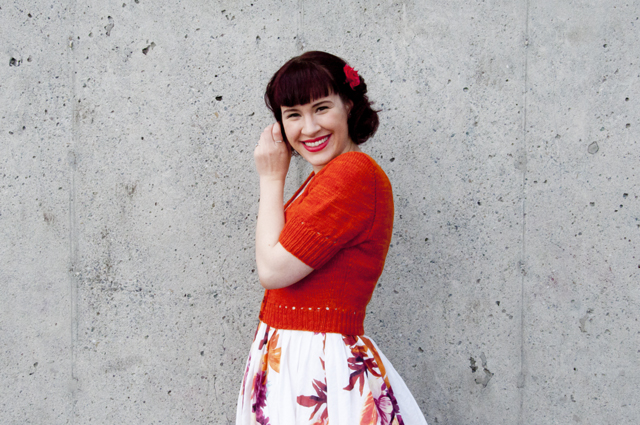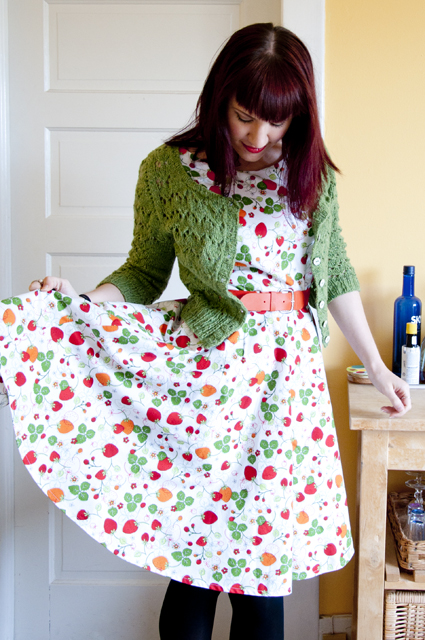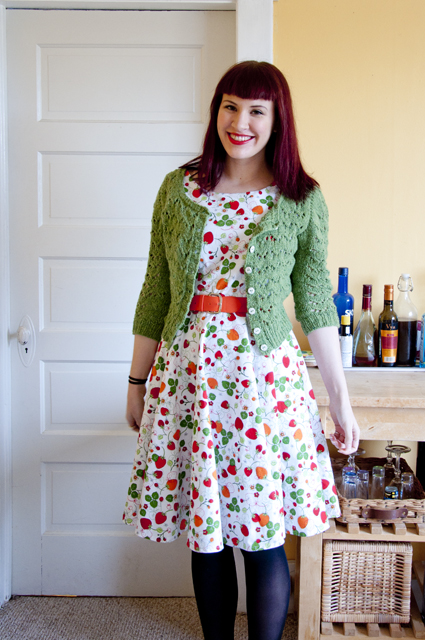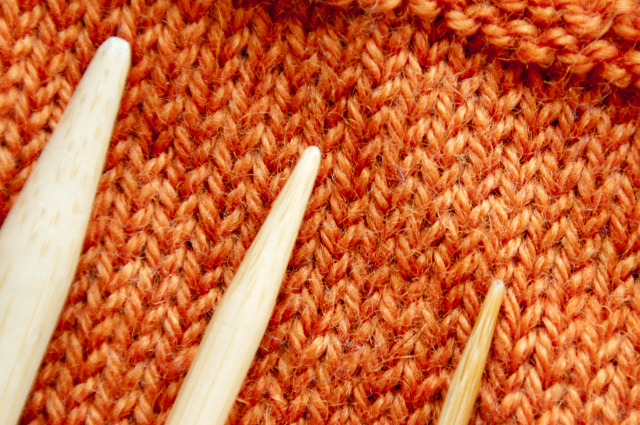Me Made May gets a lot of crafters thinking about wardrobe building, and I frequently get comments from knitters who wish they had more sweaters that they really wear. Planning good sweaters can be more challenging than regular shopping because, although your options are endless, you have to want to knit the project, get the fit right without trying it on first, and also want the final result in your wardrobe. Here are my best tips for planning a sweater you’ll love.

1. Always check your measurements and don’t worry about the name of the size.
Knitting pattern sizing doesn’t always match the sizing in store-bought clothing, so it’s important to measure yourself, evaluate the ease recommendations if there are any (subtract from your own measurements for negative ease and add to them for positive ease), study the schematic, and use all of that information to choose a size. If you get hung up on numbers, try using the opposite of your native measurement system. Choose Imperial if you usually use Metric and vice versus. The measurements will have less meaning to you, so working with them will hopefully be less loaded and more accurate.
2. Get to know your figure and learn what you love about it.
Some sweater advice tells you to focus on creating a balanced figure or to disguise your flaws, but I think it’s better to focus on your favorite aspects of your body and if the sweater will show those off. If it highlights the stuff you feel good about, the rest will follow, and it just makes for a better experience if you give your attention to the positives. So think about what it is you love. Is it your waist? Is it your long, elegant neck? Is it your cleavage? Your muscular arms? Spend some time considering what you want a sweater to show off, and then look at the patterns you’re drawn to. Will they flaunt and/or flatter your favorite features? If the answer is no, take a minute to admire the sweater for the qualities it does have, and either keep them in mind while looking for a different pattern that better suits what you’d like to show off or start planning an adaptation.


3. Be honest about what you’ll wear.
Once you find a sweater that should both fit you and show off your favorite physical attributes, it’s important to take a moment to think about if it will fit into your lifestyle. If you work in an office and like to bundle up at home, a risque pullover probably won’t get worn often and isn’t the best use of your knitting time if you don’t have a lot of sweaters. A flirty, knit smoking jacket to dress up some loungewear might be just the ticket, though. Similarly, if you live in Southern California, a worsted weight alpaca sweater probably won’t get worn as much as something like a linen tee. Think hard about the opportunities you’ll have to wear a pattern and what you own to wear with it. If it doesn’t work with your current wardrobe and lifestyle, and you’re not a 100% process knitting, keep looking for a better pattern.
4. Choose colors that match your wardrobe.
This is my personal struggle. Make sure the yarn you buy goes with the colors you like to wear. I’ve gone as far as carrying a shoe around my LYS and trying to match yarn to it, because color can be just as important as the shape of a sweater. If you knit a neon sweater but only really wear jewel tones, a sweater in the most flattering shape that fits with your lifestyle still probably isn’t going to get worn because it doesn’t match anything. Try to be frank with yourself while buying yarn. I know it’s hard; every color looks so good as a ball of yarn!

5. Take the time to get the technical stuff right.
Don’t half-ass your sweater. If you’re going to spend hours and hours making a sweater, be sure to get things right. Don’t be lazy and use the first cast-on method you ever learned without knowing if it’s the best one for the project. Take some time to knit good swatches, not just to check your gauge but to also check that you understand the techniques involved and are using the right ones. A sweater can take a long time to knit, and a failed sweater can be demoralizing, so don’t skip the prep-work. Knitting good swatches before you start doesn’t take nearly as long as reknitting an entire sweater.
Leave a Reply